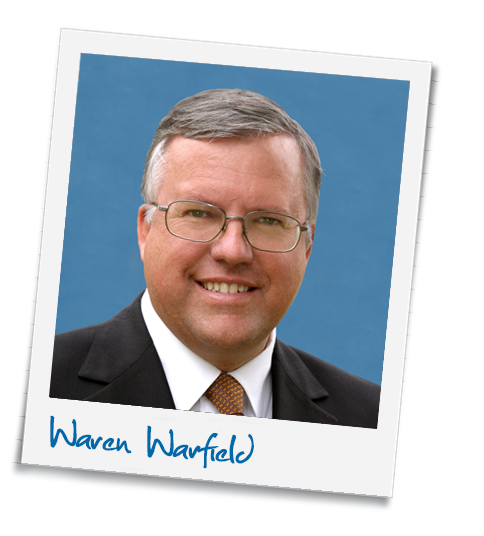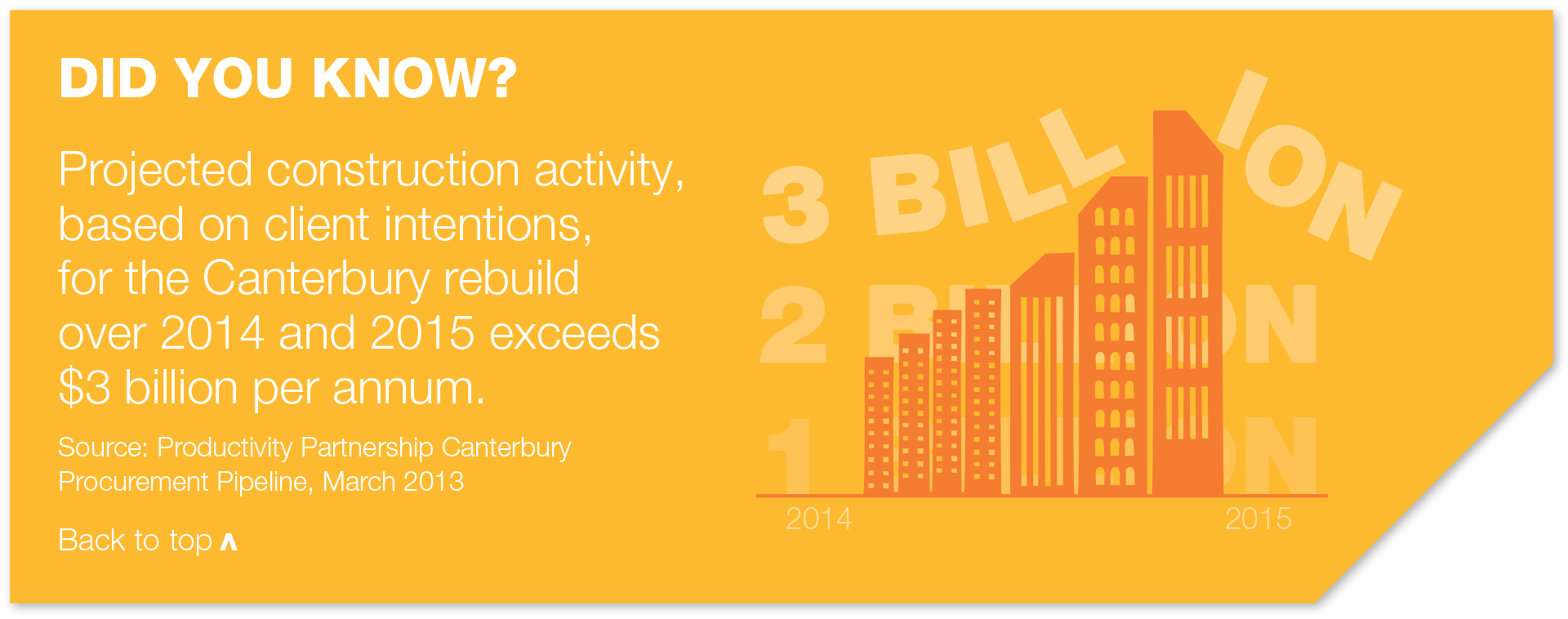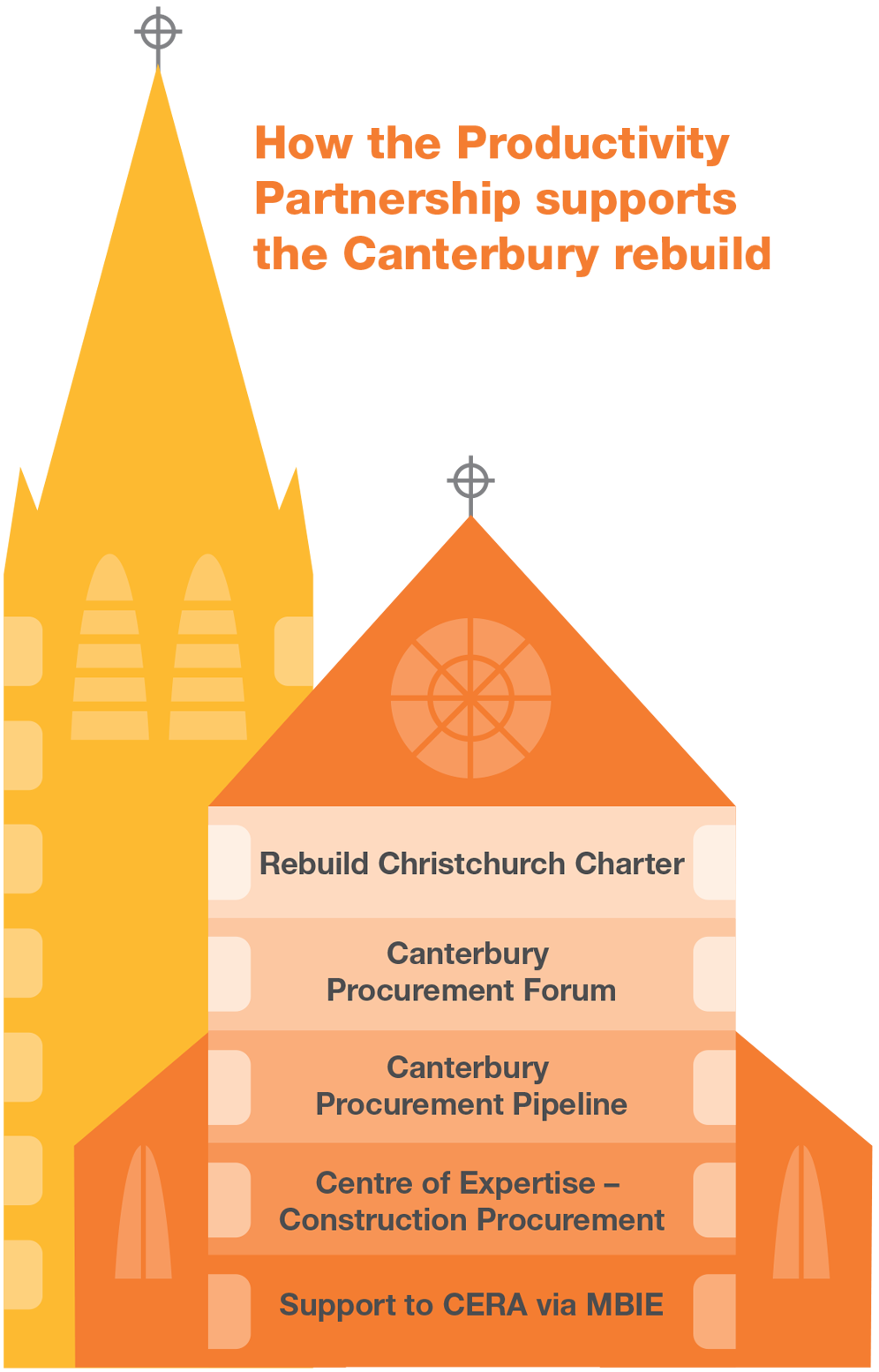|

VALUE BUILDER – Waren Warfield
WAREN WARFIELD IS THE FORMER MANAGING DIRECTOR OF THE RESOURCE CO-ORDINATION PARTNERSHIP (RCP), THE LARGEST INDEPENDENT PROJECT MANAGEMENT COMPANY IN NEW ZEALAND. HE WAS SUPERINTENDENT’S REP FOR THE AMERICA’S CUP VILLAGE AND PROJECT MANAGER FOR THE EDEN PARK REDEVELOPMENT FOR THE RUGBY WORLD CUP.
|
Waren stepped down from the RCP MD position in 2011 to move to Christchurch and become an adviser to the Canterbury rebuild and specific projects. He remains a RCP director. RCP currently have 40 clients in Christchurch and Waren is client adviser on the Justice Precinct development and programme director on the Burwood Hospital rebuild and Christchurch main hospital redevelopment. Here he shares his perspective on the Canterbury rebuild.
|
Streamlining processes in the construction industry to improve productivity is a key objective of the Productivity Partnership and it’s also pivotal to rebuilding Canterbury fast.
If you want to speed up construction, how do you do it? I believe the answer is pretty simple. Working in partnership is the key – asking people to work outside their comfort zone and rewarding them for their efforts.
Streamlining processes in the construction industry to improve productivity is a key objective of the Productivity Partnership and it’s also pivotal to rebuilding Canterbury fast.
Whilst the initial assessment of earthquake damage, insurance settlements and land sale or land acquisition have taken some time to resolve, we can see lots of green shoots emerging from the rubble in the CBD, with construction of many significant new buildings planned to commence in 2014. This will put pressure on the industry to gear up to meet the demand and work efficiently to keep prices affordable and resources at a sustainable level.
TEAMWORK IS KEY
One of the early projects for the rebuild is the redevelopment of Burwood Hospital. It’s a $190 million hospital redevelopment that needs to be ready in two years to bring additional bed capacity into Christchurch. We want it rebuilt fast and well. I’m very mindful that anchor projects such as Burwood and Christchurch main hospitals are catalysts for other work to follow. We can’t delay starting them by doing things the traditional way.
For Burwood, we’re piloting many of the principles promoted by the Productivity Partnership and which are used in critical path planning. These include early involvement of contractors and the supply chain in the design, documentation and procurement phase of a project. This brings “build ability” into the design process and aids appropriate detailing with the input of product manufacturers. Working through the design process with contractors is invaluable. By thinking of different ways of doing things, the project team can move fast and save the client money.
We’ve moved to competitively tendering for every trade on an open-book basis. The builder shortlists the preferred candidates, does due diligence and looks at who can provide the best value for money and do the job the fastest. Pulling the project team together happens in parallel with the design process – there’s no need to wait until the drawings are finished. It’s important to choose people with the right attributes – builders with management skills and the foresight to help. Bringing teamwork to a project can take up to six months off a timeline and that’s what the recovery in Christchurch needs.
BIM BENEFITS
Another way to increase efficiency in the construction process is using BIM and other innovative technology. For the hospital projects, we’re using BIM to help get user group sign-offs. There are numerous clinical groups – from clinicians to support and admin staff. We can walk them all through a 3D living, working model of the building so they can see if it meets their needs. Designing in 3D gives clients a clear idea of what a building will look like and how it will function, early in the project design process. BIM helps us work faster and deliver a better result.
Using BIM also helps detect clashes and reduces the number of variations or changes occurring during construction. Working in a digital world helps every facet of project planning – asset management, maintenance, energy efficiency – it can be applied in so many ways.
Pushing productivity up by 20 per cent isn’t hard if you get everyone pushing in the same direction. For many businesses that means changing to a different, collaborative contractual model. You can do great things if you have the right team around you and incentivise them to perform.
Back to top
|









